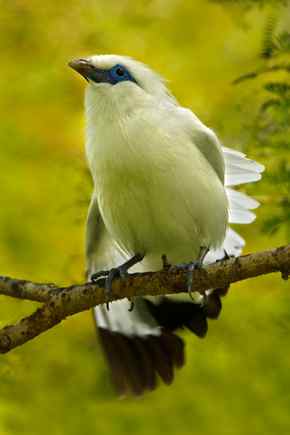Dr Eric Tan a.k.a. MountainMan photographed the Bali Starling (Leucopsar rothschildi) at the Telok Brumbun, Bali Barat National Park, Bali, Indonesia on 23rd January 2010.
The Bali Starling is a critically endangered species endemic to Bali. When it was discovered in the 1900s, there were about 300-900 birds, probably much more. Illegal poaching as well as habitat loss reduced its population drastically to about 15 birds in 1990.
Conservation efforts in the form of the Bali Starling Recovery Plan followed by subsequent releases of captive-bred birds increased the population to around 50 in 2008. A second population on Nusa Penida island, again from released captive-bred birds, seems to have adapted to the area and are breeding. In 2008 there were 56 adults and 39 young present.
Outside of Indonesia, there are about a thousand birds in captivity.
The Bali Starling is listed as CITES I, meaning that it is the most endangered among the CITES-listed animals and plants. The bird cannot be traded internationally except for scientific research and related non-commercial purposes.
Reference:
BirdLife International (2009) Species factsheet: Leucopsar rothschildi. Downloaded from http://www.birdlife.org on 17/2/2010










3 Responses
It’s a miracle the bird is not extinct yet. However, there are good reasons to be hopeful. There is little development on Nusa Penida island and hopefully this will become a sanctuary where the birds can not only survive but thrive.